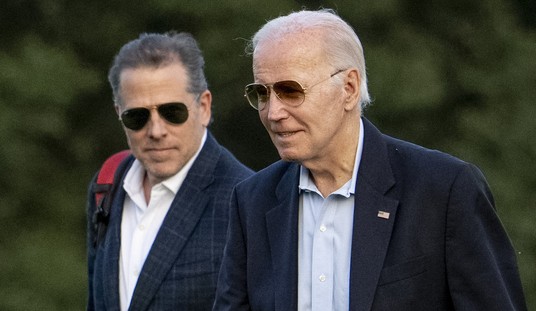The lack of money is the root of all evil.
— Mark Twain
Scratch the surface of any powerful organization, no matter how spiritual its avowed ideals, and one is likely to find the lifeblood of money coursing beneath it. The New York Times says that undergirding Hezbollah’s ostentatious piety is a network of criminal funding through which vast amounts of laundered money flow. “They operate like the Gambinos on steroids.”
In all, hundreds of millions of dollars a year sloshed through the accounts, held mainly by Shiite Muslim businessmen in the drug-smuggling nations of West Africa, many of them known Hezbollah supporters, trading in everything from rough-cut diamonds to cosmetics and frozen chicken, according to people with knowledge of the matter in the United States and Europe. The companies appeared to be serving as fronts for Hezbollah to move all sorts of dubious funds, on its own behalf or for others.
The plumbing for the money was the Lebanese banking system with pipes to socially prominent individuals and famous banks overseas. Money derived from drugs, contraband and other dark enterprises was generated and passed around the Middle East, Central Asia, South America and both sides of the Atlantic. The network of corruption was so extensive that even now it is uncertain whether it may have tainted the very agencies now tasked with rehabilitating the banks infected by Hezbollah operations.
As part of its own agreement with Treasury officials, Lebanon’s Central Bank set up a process to scrub the books. But compliance officers at S.G.B.L.’s French partner, Société Générale, were skeptical of the Central Bank’s choice of investigators. One of them, the local affiliate of the international auditing firm Deloitte, had presumably missed the drug-related accounts the first time around, when it served as the Lebanese Canadian Bank’s outside auditor. … As an extra step, to reassure wary international banks, the chairman of S.G.B.L., Antoun Sehnaoui, commissioned a parallel audit, with the help of Société Générale’s chief money-laundering compliance officer.
Did they miss the evidence the first time? Well to err is human. Besides, in some cases, the digital accounting track simply vanished into a trail of diamonds and similar types of untraceable wealth as shadowy individuals willing to handle the hot money flourished like Mayflies only to disappear as quickly.
At the center of many of these webs were companies trading in diamonds, which experts say are fast replacing more traditional money-laundering vehicles because they are easy to transport and are generally traded for cash. Large transactions leave no paper trail, and values can be altered through bogus transactions. A number of these dealers had been implicated in the buying of “conflict diamonds” and other minerals used to finance civil wars and human-rights abuses in Africa.
The world as seen through the prism of money could be a very different place from that depicted by Hollywood if in actuality it were some turbaned Ayatollah not a redneck Afrikaner racist who was really behind “blood diamonds”, crack cocaine and gun smuggling.
Has the Lebanese banking sector been cleaned out? The jury, the NYT says, is still out. That probably means ‘no, it hasn’t been cleaned out’ and people are just waiting for the heat to die down.
Treasury officials have no illusions that their work here is done. From the beginning, the blacklisting was also intended as a wider warning to a banking industry that, with secrecy to rival the Swiss, forms the backbone of Lebanon’s economy: henceforth, other bankers did business with Hezbollah at their peril.
If there’s a moral to this story someone ought to bottle it and put it on display. Other than as seen in moral hazard, morals appear to be a rare commodity in the world of high finance. In the United States the SEC was trying to attempting to come to terms with another financial debacle. “In a lawsuit filed in New York, the Securities and Exchange Commission brought civil fraud charges against six former executives at the two firms, including former Fannie CEO Daniel Mudd and former Freddie CEO Richard Syron.”
The investigators allege that both Fannie and Freddie completely misled investors with respect to their exposure to subprime loans. It was as it turned out, larger than it seemed.
Fannie told investors in 2007 that it had roughly $4.8 billion worth of subprime loans on its books, or just 0.2 percent of its portfolio. That same year, Mudd told two congressional panels that Fannie’s subprime loans represented didn’t exceed 2.5 percent of its business.
The SEC says Fannie actually had about $43 billion worth of products targeted to borrowers with weak credit, or 11 percent of its holdings.
Freddie told investors in late 2006 that it held between $2 billion and $6 billion of subprime mortgages on its books. And Syron, in a 2007 speech, said Freddie had “basically no subprime exposure,” according to the suit.
The SEC says its holdings were actually closer to $141 billion, or 10 percent of its portfolio in 2006, and $244 billion, or 14 percent, by 2008. …
So far, the companies have cost taxpayers more than $150 billion — the largest bailout of the financial crisis. They could cost up to $259 billion, according to their government regulator, the Federal Housing Finance Administration.
But no one is likely to go to jail. The Washington Post article said that Goldman Sachs, JPMorgan Chase & Co and Citigroup also confessed to misleading investors but wound up simply paying fines. There were no charges against top executives there and none are expected against the former brass of Fannie and Freddie either. It is no big deal.
Mudd, who now runs the Fortress Investor Group says everyone was in the know. “Every piece of material data about loans held by Fannie Mae was known to the United States government and to the investing public,” Mudd said. Syron’s lawyers said the term “subprime had no uniform definition in the market” at that time. Nothing was kept back, and there was nothing to say either.
The New York Times says everyone has moved on since then. “Fortress … which is based in New York, was started in 1998 by five former executives of Lehman Brothers and Goldman Sachs. … hired Mr. Mudd in July 2009, nearly a year after the government forced him out as Fannie’s C.E.O.” He maintains a philosophical attitude toward events. “This is no joyful state of affairs for us as human beings, but it is actually a very good investment environment,” he said. “Maybe the best we’ve seen in our lifetime.”
And maybe that’s how it is, from Lebanon to Manhattan. Only chumps come to the table expecting justice. The players know better. All there is, and all there ever was, was a slice of the action.
Storming the Castle at Amazon Kindle for $3.99
No Way In at Amazon Kindle $3.99, print $9.99
Tip Jar or Subscribe for $5









Join the conversation as a VIP Member